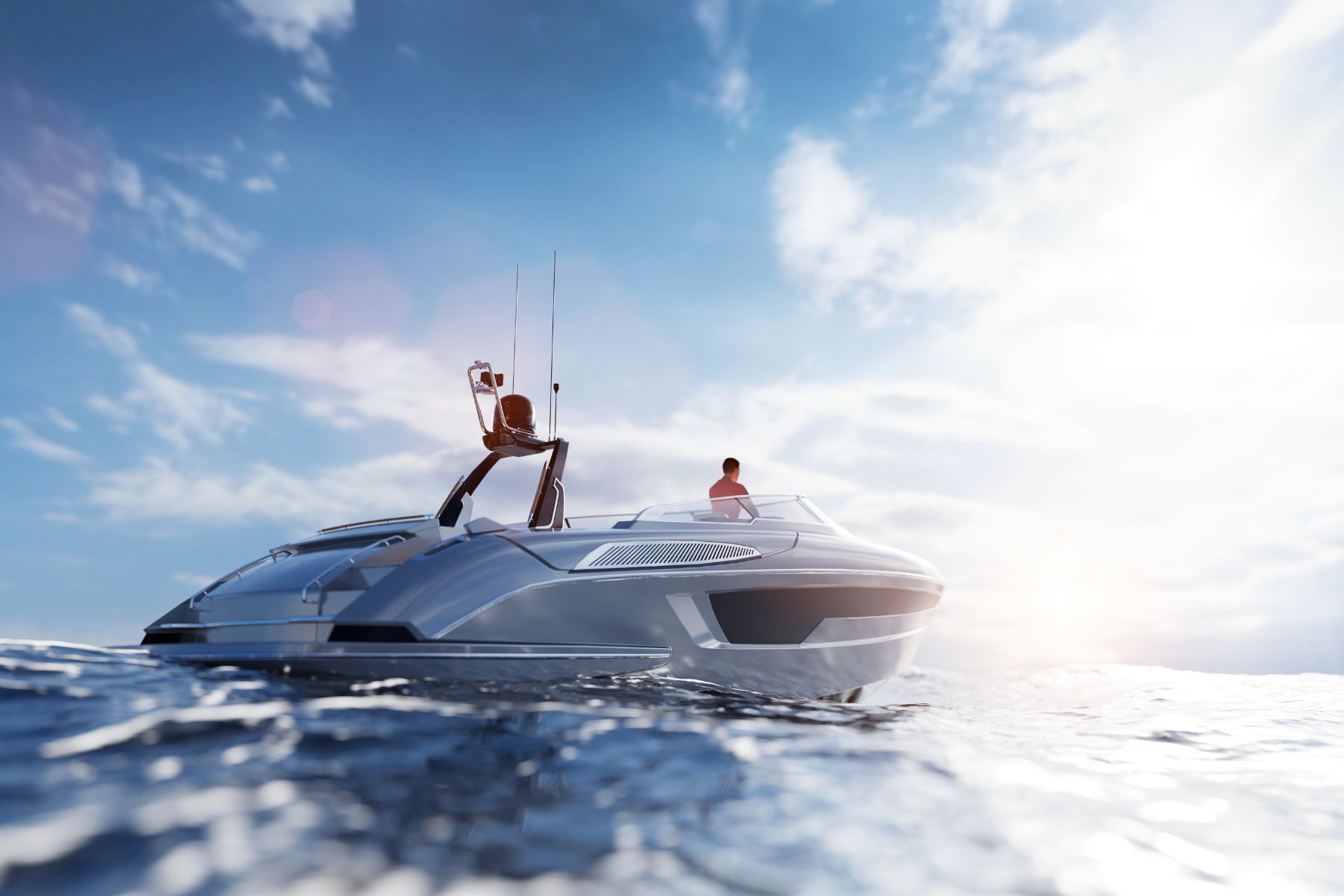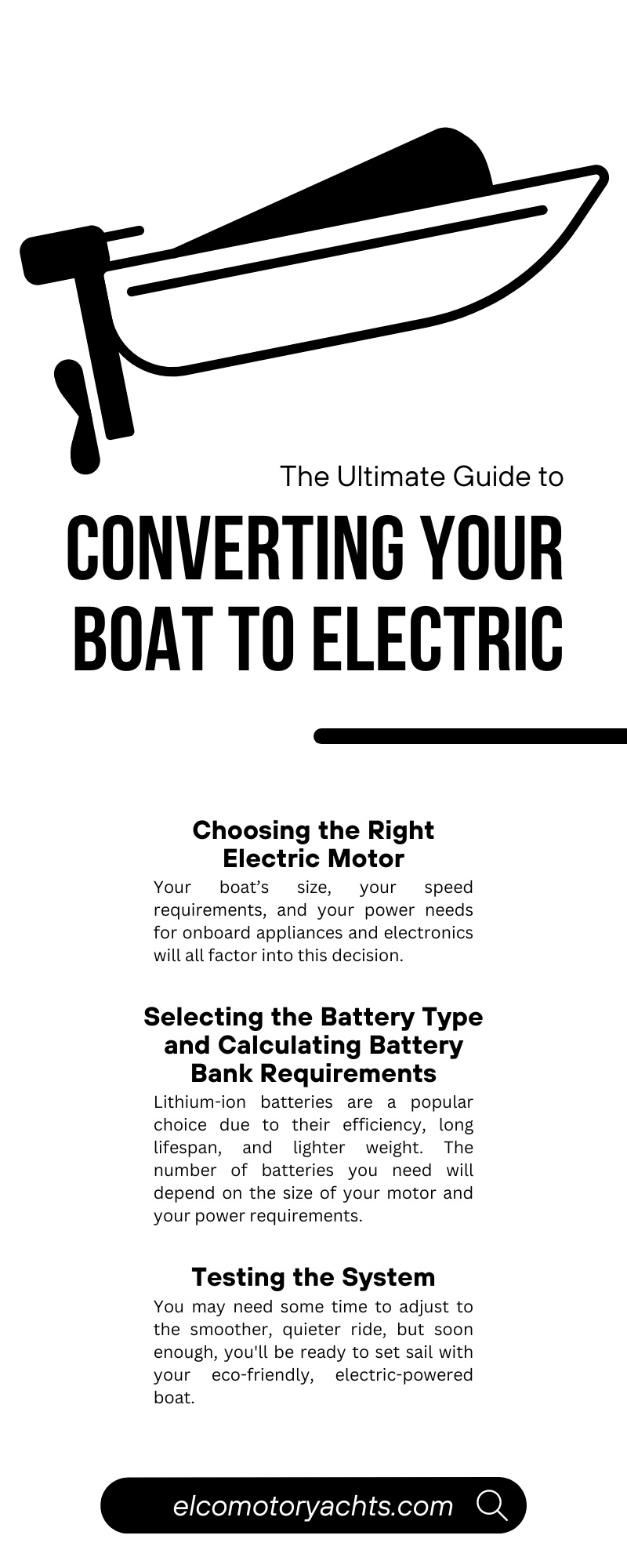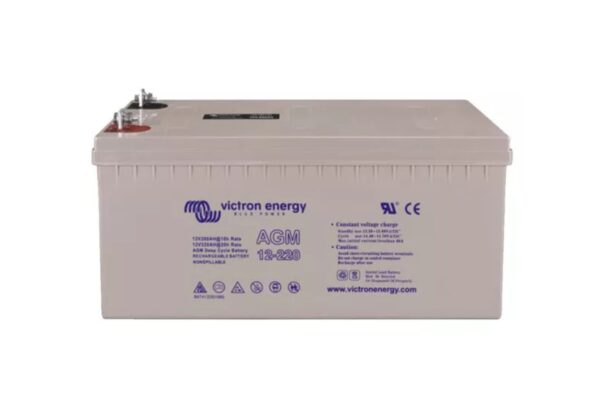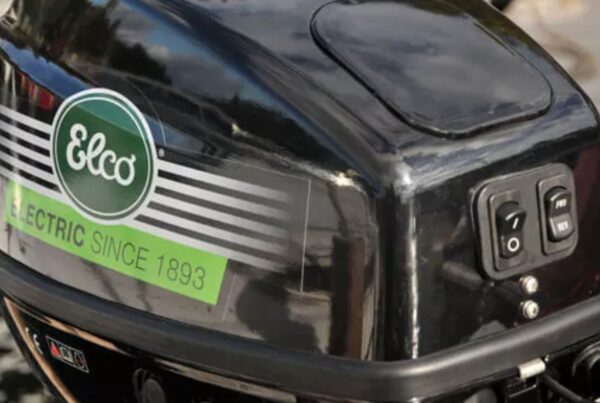
The accelerating adoption of electric boat motors is not just a modern phenomenon but a nod to a more sustainable and eco-conscious way of boating that has been part of our history for over a century. Use this ultimate guide to converting your boat to electric as you prepare to adopt propulsion that reduces carbon emissions and provides a quieter, more enjoyable boating experience.
Elco Introduces Electric Launches in 1893
Elco Motor Yachts provided 55 electric launches to ferry attendees around the fairgrounds of the World’s Columbian Exhibition in Chicago. The company went on to provide electric boats for the British Admiralty during WWI and to produce PT boats, including PT-109, the boat that counted John F. Kennedy among its crew.
The Advantages of Electric Propulsion for Boats
Electric boat motors offer numerous advantages over gas-powered motors. The most obvious and impactful advantage is that electric boat motors produce zero exhaust emissions. With climate change remaining an ever-pressing issue, the maritime industry is steadily moving toward cleaner, more sustainable solutions. Electric propulsion systems for boats align seamlessly with this shift, releasing no harmful pollutants into the air.
Another advantage of electric motors is their quiet operation. Unlike traditional fossil-fuel engines that create a constant rumble and roar, electric motors run smoothly and quietly, enhancing the serenity of your boating experience. The hush of the electric motor allows you to fully experience the sounds of the water and the surrounding environment, enriching your connection with nature as you traverse the waterways.
A very low need for maintenance is another compelling reason to consider electric propulsion. Electric boat motors are simpler in design and feature fewer moving parts than internal combustion motors, eliminating the need for oil changes or spark plug replacements. This reduced maintenance not only translates to cost savings over time but also means less time tinkering with the engine and more time enjoying your maritime pursuits.
Converting a Traditionally Powered Boat to Electric
Converting a traditionally powered boat to electric propulsion involves several preliminary steps and careful consideration of your vessel’s needs as well as your own boating style.
Choosing the Right Electric Motor
When converting your boat to an electric motor, the first step is to choose the right motor. Your boat’s size, your speed requirements, and your power needs for onboard appliances and electronics will all factor into this decision.
Naturally, larger boats will require more powerful motors. Similarly, if you value speed and have a lot of high-powered electronics onboard, you’ll need a motor and battery bank that can handle that load.
Selecting the Battery Type and Calculating Battery Bank Requirements
Next, it’s time to choose your battery type and calculate how many batteries you will need. Lithium-ion batteries are a popular choice due to their efficiency, long lifespan, and lighter weight. The number of batteries you need will depend on the size of your motor and your power requirements. Remember that it’s not just about getting your boat from point A to point B. You also need to power any appliances and electronics onboard. Balance power needs with weight considerations, cost, and the typical range of your boating excursions.
Easy Installation of Motor and Battery Charging Options
Consider installation of your motor and your battery charging options. While many boat owners can manage this conversion themselves, professional installation can ensure it’s done right.
As for charging, you have multiple options. Make sure you have a compatible battery charger, which may connect to shore power stations or solar panels. Some boat owners also opt for hybrid systems that combine solar with traditional charging methods. Ultimately, the best charging solution will depend on your boating habits, your access to charging facilities, and your battery bank’s specific charging requirements.
The Importance of Compatibility
Ensuring compatibility of the battery bank with all the connections, wiring, switches, appliances, electronics, and safety systems in your boat is necessary to ensure everything will work without damaging any essential components of your boat’s electrical systems. It’s crucial to ensure these components are designed to function harmoniously without prematurely draining the batteries or causing potential damage to the battery or motor.
The outboard motor battery bank should be in line with the voltage and power draw requirements of your chosen electric motor. Moreover, the wiring and switches should be rated for the expected electrical load and equipped to handle the peak power draw of the motor and other onboard appliances and electronics.
Compatibility extends beyond just physical connections. The electrical current, measured in amperes, should match the electric motor’s needs. Overlooking this compatibility could lead to wires overheating, poor electric motor performance, or even damage to the motor.
You also need to consider the power usage of onboard appliances and electronics. It’s advisable to select energy-efficient models that won’t use more than their fair share of battery power. Likewise, safety systems such as fuses and circuit breakers should be appropriately sized for the new electric system to prevent potential electrical faults.
Your boat’s charging system must accommodate the needs of your new electric motor and battery bank. This could mean upgrading your onboard charger or adding a solar panel system, depending on your specific needs and circumstances.
Ensuring compatibility is not just about performance but also about safety. Incorrectly sized or rated components can pose serious risks, so it’s essential to take the time to get it right. When in doubt, consult a professional to prevent any potential issues.
Testing the System
Once your boat is equipped with its new electric motor and battery bank, you need to test the system before venturing out on the water. Make sure everything is working correctly and familiarize yourself with operating your boat in this new way. You may need some time to adjust to the smoother, quieter ride, but soon enough, you’ll be ready to set sail with your eco-friendly, electric-powered boat.
Converting your boat to electric propulsion is a significant and rewarding undertaking. Not only are you making a conscious choice for the environment, but you’re also embracing a more peaceful and low-maintenance way of boating. With the right knowledge, resources, and professional assistance, you can successfully convert your boat to electric.





